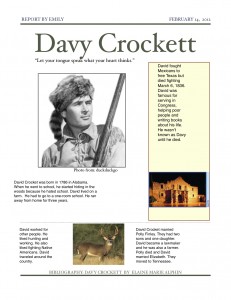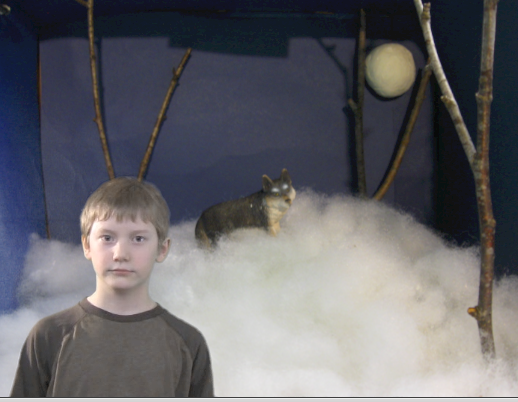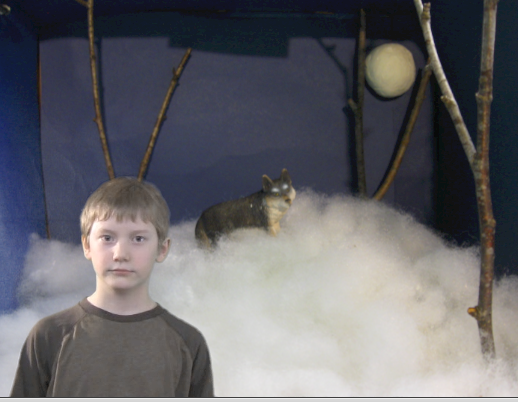Cheetahs By Olivia
Imagine you are on the grassy African Savannah. Suddenly, a gazelle darts past! Then a tawny blur flashes past, in pursuit of the gazelle, it has to be a cheetah! It goes past at about top cheetah speed, or 70-75 mph! Cheetahs run, rather than fight, against lions, hyenas, or leopards. This happens for two reasons, they are built for speed and injured cheetah + wild = starved cheetah. They can’t protect their cub(s) from danger. Not only that, they can’t protect their territory against humans! Sadly, this species is racing to the finish of existence!
Names of the Cheetah
The cheetah’s common name, cheetah, is formed from “citraka” the Sanskrit word for speckled body. Its scientific name is acinonyx jubatus. It is the only animal left in its genus. Scientists believe that they used to live in the United States of America, and many animals in its genus died out. Did you know that 99% of a cheetah’s genes are the same as one another?! This may have happened something like this: many of the cheetah’s ancestors died, and all the surviving ones were related, so they had to mate with one another. Once when some scientists saw a cheetah with a stripe down its back and short stripes, instead of spots, they thought that it must be a separate species, so they called it acinonyx rex, or “king” cheetah! It turned out to be a rare mutation, they figured that out when a regular female cheetah mated with a regular male cheetah and gave birth to a “king” cheetah cub.
A Description of the Cheetah
Most big cats are strong and muscular hunters, but the cheetah is different. The cheetah is so different that they even make different sounds! The cheetah purrs when happy, coos, like a dove when they are ready to mate, and most unexpected of all, they chirp to their cubs! The average cheetah weighs 80-140 pounds. They are about 4 1/2 feet long with an additional 30 in. for the tail. Cheetahs are built for speed with the four Ls: long, light, lean, and lanky. No other land animal can compare to their top speed, of 70-75 mph! They are tawny with black spots, except for their throat and stomach, which are white with a few black spots. They are hidden well while stalking their prey, because of their spots. Another thing that helps them survive are long tails, which counter-balance their bodies during the chase. And yet another thing that help them survive are huge chests, which hold huge hearts, that can pump blood quickly. Their blunt claws, which are unable to retract, help to give the traction, which every runner needs! On their faces are black lines called “tear marks.” They absorb the sun’s glare, so the cheetah can see prey and spot predators.
Mating Habits
When cheetahs are born, they have a blackish, grayish back with a wide white stripe down the middle. This coloring helps them to hide from predators, like the lion, leopard, or hyena, who seek the chance to “get rid of the competition.” It also helps the cubs look like the ferocious honey badger, (honey badgers are animals who no one messes with) when they curl up. They will have these markings for the first two months of their life. Cubs will live with their mother for the first 18 months of their life, but they will never know their father. The cubs will stay together for about six months after they are separated from their mother. The females will then leave, and let the male cub(s) decide whether they want to form a small group, of 2-4 cheetahs, and find and defend their territory together, or defend their territory alone and separate, with the possibility that they may never see each other again. These big cats stay together longer that any other big cat, except the lions, panthera leo, who tend to live together, in groups called prides. The female cheetah is a runner, and only groups of males will defend their territory against other predators. After it rains, female cheetahs start to “coo.” This tells the males that she is looking for a mate. Gazelles reproduce after it rains, so it makes sense for cheetahs to do so as well.
The Cheetah’s Habitat
Cheetahs need a lot of space and prey, and humans are eliminating both! Cheetahs live on the grassy African Savannah. The cheetah’s habitat is decreasing because people are creating buildings on the cheetah’s home. Humans also cause prey loss when they hunt and scare gazelles. If the gazelles aren’t there, then the cheetah can’t be there! Since their natural prey, gazelles, are unavailable, cheetahs will prey on the farmer’s livestock, like sheep or cattle. The farmers will kill cheetahs because they are allowed to shoot them, if they are protecting their livestock, even though they are endangered. Lions, hyenas, and leopards are all nocturnal (they hunt at night) whereas cheetahs, on the other hand, hunt at day. This means that farmers blame cheetahs, who are shot enough for their own kills, for the lion’s, hyena’s, and leopard’s kills as well! The cheetah kills gazelles and other prey through suffocation. The cheetah’s diet includes impalas, wildebeest, antelope, rabbits, and mainly gazelles.
Female cheetahs need about 300 square miles of territory to support themselves, with or without cubs. A female’s territory will possibly overlap with other females, but NOT with male’s territory. Females will do their best to avoid each other. Males usually live in groups, mainly of brothers, and they defend their territory against other cheetahs. Even though they live, in groups they only need 20 square miles, compared to 300 square miles for ONE female cheetah! Humans force cheetahs closer to more “battle worthy” predators, like lions or hyenas. Cheetahs MUST avoid other predators, to avoid injury. Cheetahs need to avoid vultures, but for different reasons, because vultures attract dangerous competition, competition for survival. So to avoid conflict over food, cheetahs eat as much as they have time and stomach for. Next, they get out of there! If humans continue to steal their land, and scare away their prey this extraordinary species will cease to exist!
Range & Population of the Cheetah
The cheetah’s habitat, or where it lives, may seem vast, but in reality 2,000 square miles only fits about 6 female cheetahs. In the wild, there are only 9,000 to 12,000 cheetahs left. There are also about 1,400 captive cheetahs in zoos and wildlife reserves around the world. That is only 10,400 to 13,400 left in the entire world! In Jordan, the cheetahs were hunted until only a female and her cub were left, then they were shot as well. How would you like it if your friends, parents, sister(s), and brother(s) were all killed and you were driven from your home, lost all your food, and eventually shot by these giants, with shiny “tubes” that shoot “lightning?” That is what it may be like to a cheetah! The cheetah’s numbers will only continue sinking, unless people stop causing these animals problems. Unless humans will destroy this creature’s habitat, family, and their way of living.
The Cheetah’s Value
Have you ever seen real cheetah skin/fur coats, snake skin belts, or alligator hide, for a purse? If you have, chances are that they were tracked, killed, shipped, and bought illegally. People kill cheetahs for their pelts, and female cheetahs for her cubs to sell as pets. This is done illegally. Cheetahs can’t be killed legally by a human, unless they are protecting livestock, so if someone kills a cheetah, they have done it illegally. Most people kill either for the excitement and enjoyment of tracking and killing the fastest animal of the land, or for the money of selling the pelt or cub. Did you know that a long time ago in Egypt, people kept cheetahs as pets?! Since cheetahs aren’t as ferocious as most big cats, Egyptians thought that they would be good pets. They also trained them to hunt for them. Did you know that the cheetah’s pelt once symbolized wealth, and power? If you see a product made out of an endangered species, DON’T buy it! It probably shouldn’t be here.
Threats That Cheetahs Face
From the day a cheetah is born, they face deadly threats. If their mother can’t kill enough prey, then the cub will starve. If humans take away their habitat by building more homes, then the cheetah cub might starve or be forced too close to other predators, and killed. Even in their mother’s stomach they are at risk of never being born. It takes about 90 days for a female cheetah to have cubs after mating. In other words, their gestation period is 90 days. In each litter, there are 1-8 cubs, more commonly 3-5, so when someone kills a pregnant female cheetah, they could be killing up to 9 animals! The risk of a cheetah cub not living to adulthood is very high, even without the threat of humans the chance of a cheetah cub being killed by another predator is 90-95%!
Humans, such as farmers, hunters, and poachers kill cheetahs. Hyenas, lions, and leopards all kill cheetahs! Farmers kill them to protect their livestock, poachers kill for their pelt, and for their cubs to sell at pet stores, hunters kill for fun, trophy, money, and the “thrill.” They all have one thing in common: they are threats to not only a cheetah’s individual survival, but to their entire species’ existence! These humans drive their prey from their natural home! At a certain time the cheetah’s favorite prey was the black buck, an antelope. Humans killed thousands of black bucks. When they died out, cheetahs could live there and die, or run away. The cheetah went extinct in India 60 years ago due to hunting and prey loss!
Possible Solutions to Save the Cheetah
There are many possible ways that we may help the cheetah. A zoo might put a radio collar on several cheetahs, males and females, during mating season,then release them, into a reserve separate from lions and other predators. After the season, the zoo could track them and bring them back, with their cubs. Then they could raise the cubs and do the same thing over and over again. Another possibility could be to keep cheetahs are kept away from lions, and other animals except gazelles, and other types of prey, when they’re in wildlife reserves. Maybe if the punishment for killing were worse, and the price for cheetah skin is a lot lower, you would loose more if you were caught killing or having killed a cheetah, than you would gain if you were considering it. To help with the farmer problem, farmers could put out old, dying, and sick livestock, that they don’t want, and use them to bait the cheetah into a trap, so people from a reserve could bring them somewhere where they wouldn’t bother them.
Ways for YOU to Help
If you would like to help, (1) go to worldwildlife.org, (2) double click on adopt, (3) in the top left corner, there is something that says “species adoptions,” in the top left corner, click on it, (3) then scroll down, until you see a picture of a cheetah, (4) click on it. Choose whether you want to get the $100, $50, or the $25 adoption kit, they come with different gifts. Another way you could help is (1) go to worldanimalfoundation.net, (2) “roll” over “Adopt An Animal,” (3) click “Choose An Animal,” (4) then find “Adopt A Cheetah” and click on it, (5) if you want to “adopt” a cheetah for $35.00 then click add to cart, (6) finally if you are done “shopping” click on checkout. These websites, if you ask me, are pretty cheap, compared to others. If you want any other ways to help, google “adopt a cheetah,” that’s how I did it!
Cheetah And Turtle Poem By Olivia
Cheetah
Speedy, hidden,
Stalking, chasing, slowing,
Spotting, running, pouncing, missing, slowing, walking, sleeping,
Hiding, defending, walking,
Slow, patient,
Turtle
Endangered Species Poem By Olivia
Threatened Species
Low, small,
Falling, dying, lowering,
Hunters shooting, loggers logging, no land or home!
Declining, sinking, going,
Not enough, almost gone,
Endangered Species
More Facts on Cheetahs
If you want to learn more you could go to
“Acinonyx jubatus — Overview cheetah.” eol. eol, n.d. Web. 16 Dec. 2011. Here is a link .
Or you could watch: “Mimic.” Wild Kratts. PBS Kids. PBS, n.p., 15 Dec 2011. Television. And: “Cheetah Racer.” Wild Kratts. PBS Kids. PBS, n.p., 15 Dec. 2011. Television.
Or read: Harkrader, Lisa. Endangered and Threatened Animals: The Cheetah. New Jersey: Enslow Publishers, Inc., 2005. Print. And:
Rich, Tracey, and Andy Rouse. Wildlife Monographs: Cheetahs. Herts. United Kingdom: Evans Mitchell Books, 2004. Print.
February 1, 2012
Dear Editor,
Do you know what the second fastest land animal is? I ask this because the first fastest, the cheetah, is endangered and could easily go extinct. There are only about 10,400-13,400 left in the entire WORLD! Imagine you’re a cheetah, your very existence is threatened before you’re born. Humans cause the most problems of a cheetah, and because we cause these problems, we should fix them.
How would you like to be a cheetah? You could be shot before you’re born, killed by another predator even as an adult, or even lose your family! If that’s not enough, you could be starved, driven from your home, AND shot. How would YOU like it?
Did you know 90-95% of cheetah cubs die before adulthood, from attacks by lions, leopards, and hyenas? Yet, the biggest threat to the cheetah’s existence comes from furless, two legged, deadly humans. A single female cheetah needs 300 square miles (a group of male cheetahs need 20 square miles). Humans take up a lot of land, for building on, this means less land for cheetahs. Many poachers kill cheetahs so they can sell the pelt. Others kill the mother for the cub, to sell to pet stores, and yet others kill for pleasure. Even farmers are threats. When a farmer scares away gazelles and brings his livestock to the cheetah’s territory,the cheetahs, deprived of their natural prey, are forced to starve or hunt the livestock. Despite the fact that the cheetah is endangered, farmers are permitted to kill them to protect their livestock, so cheetahs that hunt livestock are shot.
Since humans are causing these problems, we should work to help save the cheetah. Maybe someone could start a boycott against buying cheetah products. If you want to help, you could adopt a cheetah online at www.worldwildlife.org and/or donate to a wildlife reserve.
I have given you several ways to help, it’s up to you, readers, to decide to help the cheetah. I hope that you won’t just stand by and watch the cheetah go extinct. Nobody wants to watch something bad happen and know that you could have stopped it.
Sincerely,
Olivia
A friend of cheetahs,
someone who cares,
and a student of Leverett Elementary School

















